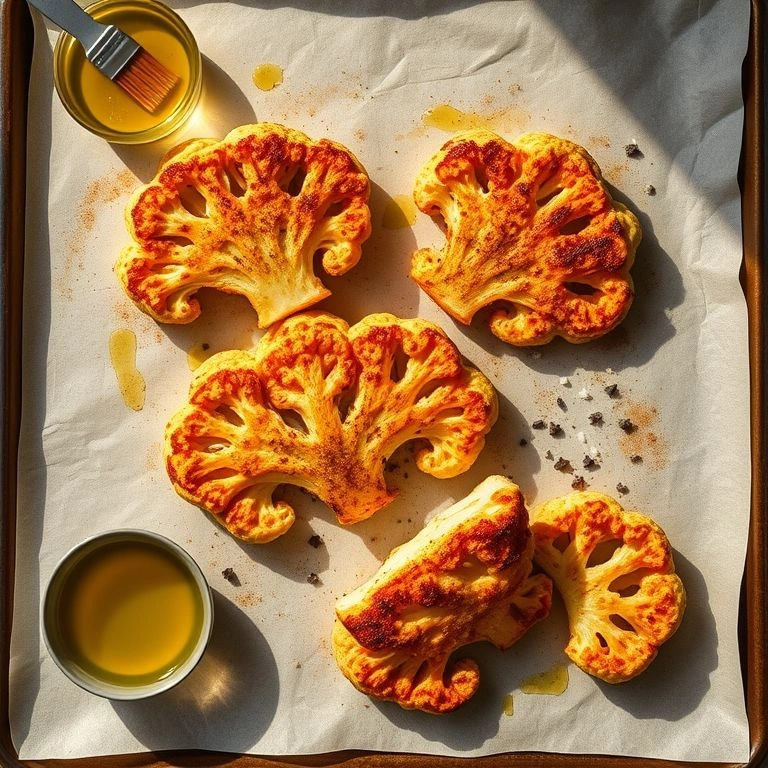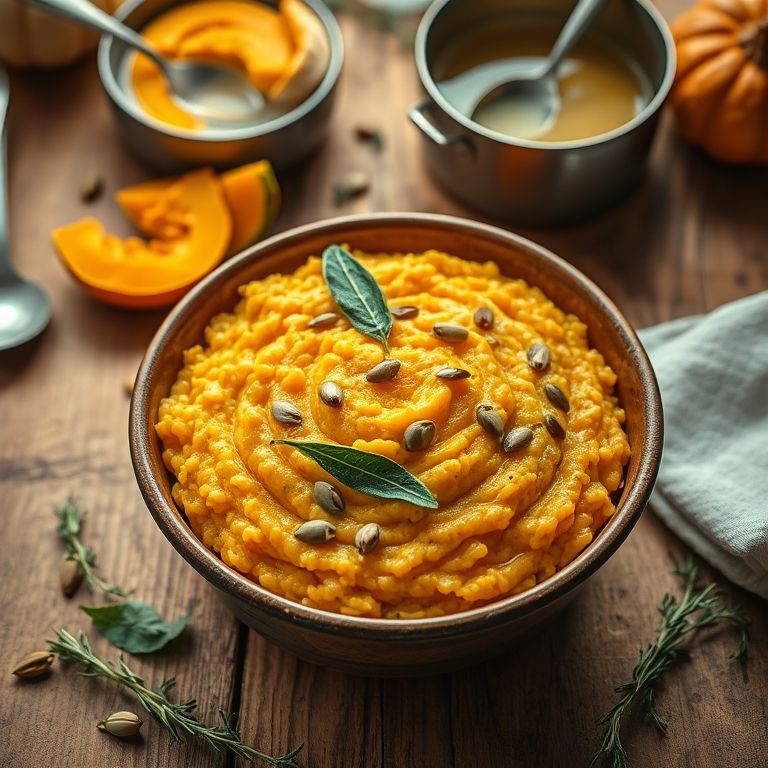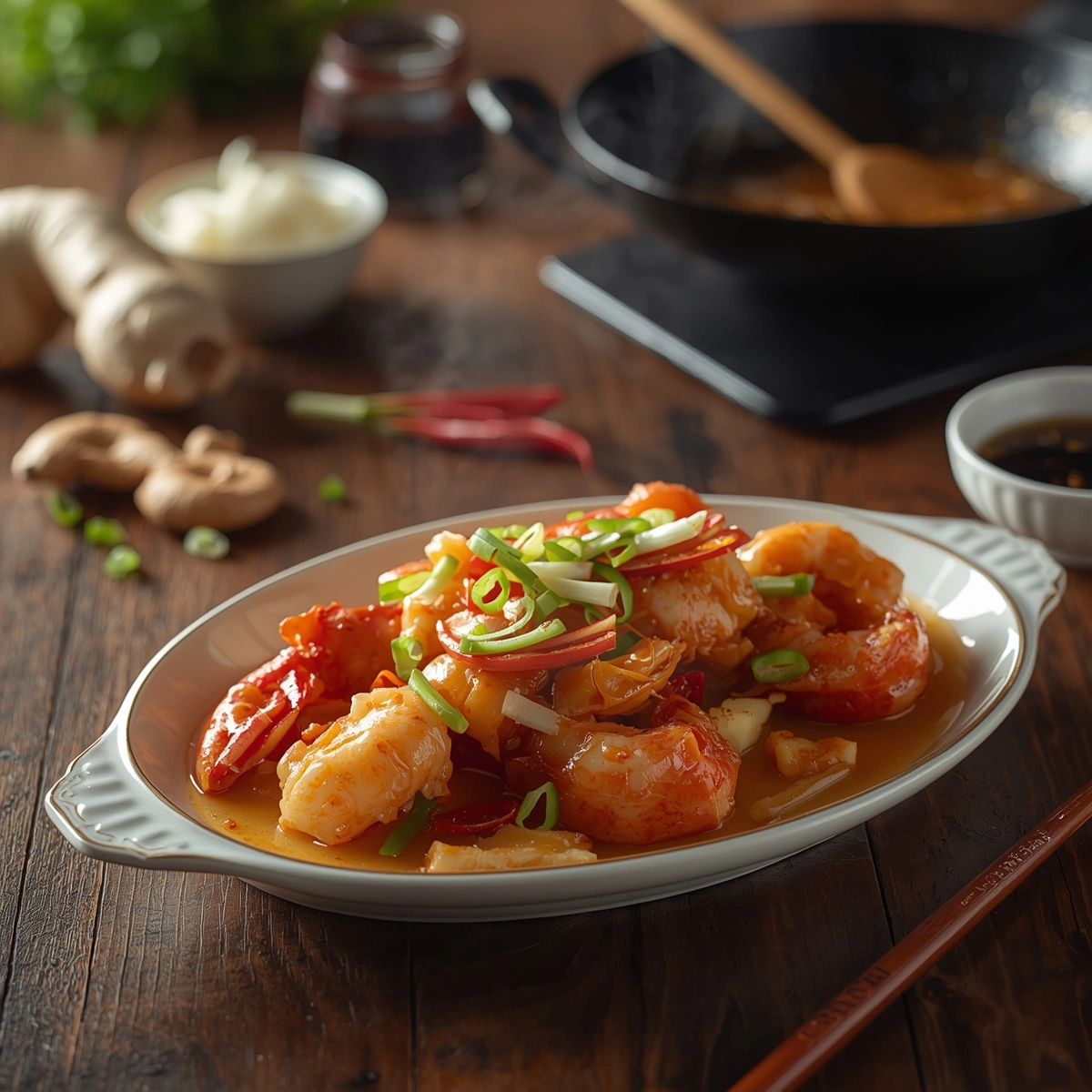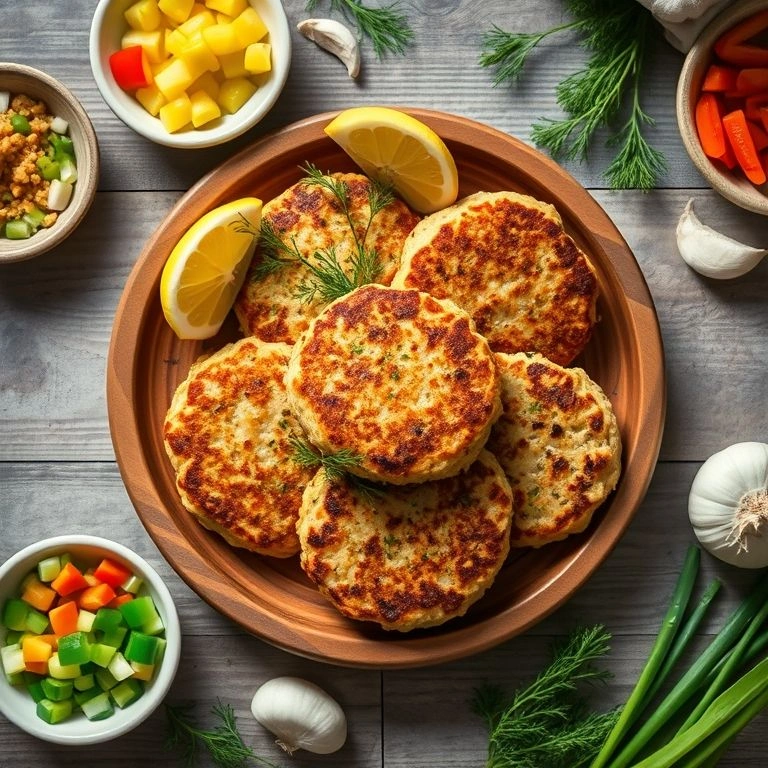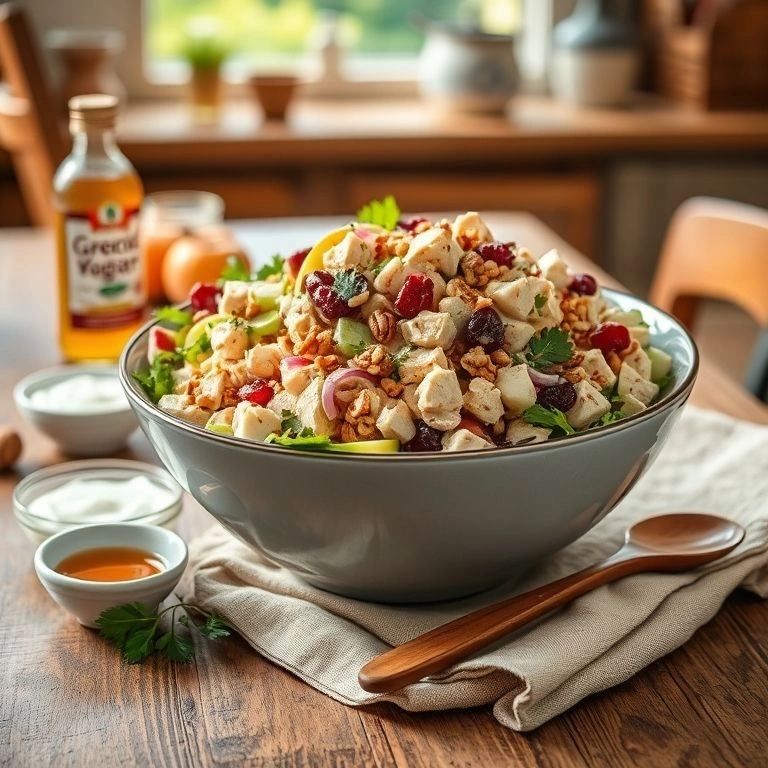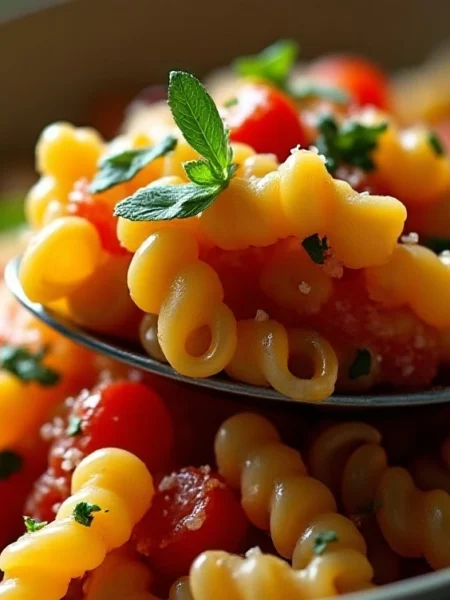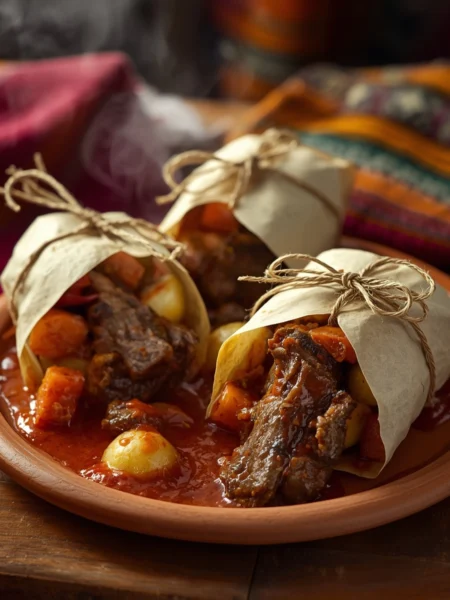Introduction
Are you searching for a lighter alternative to traditional pasta dishes without sacrificing flavor? If so, this spaghetti squash primavera recipe might become your new favorite meal! This vibrant, colorful dish combines tender strands of roasted spaghetti squash with fresh spring vegetables and a light, flavorful sauce. Furthermore, it offers a nutritious twist on the classic pasta primavera while keeping carbs low and nutrients high. Best of all, this spaghetti squash primavera is versatile enough to enjoy year-round, though it truly shines when made with seasonal produce. Let’s explore how to create this delicious, healthy dish that will satisfy both your taste buds and nutritional goals!
Why Choose Spaghetti Squash Primavera?
Before diving into the recipe, let’s discuss why spaghetti squash primavera deserves a spot in your meal rotation:
- Naturally low-carb: Spaghetti squash contains just 7 grams of carbs per cup compared to 40+ grams in regular pasta
- Nutrient-dense: Packed with vitamins, minerals, and fiber from both the squash and colorful vegetables
- Versatile base: The mild flavor of spaghetti squash pairs beautifully with countless ingredients and sauces
- Satisfying texture: The squash creates pasta-like strands that twirl on your fork just like traditional spaghetti
- Budget-friendly: One medium squash typically yields 4-6 cups of “noodles,” making it economical for family meals
Additionally, this spaghetti squash primavera is naturally gluten-free and can easily be adapted for vegetarian, vegan, or dairy-free diets, making it perfect for accommodating various dietary needs.
The Magic of Spaghetti Squash
Spaghetti squash, the star of our spaghetti squash primavera, is truly a culinary marvel. When cooked, the flesh of this winter squash transforms into spaghetti-like strands that provide the perfect base for sauces and toppings. First discovered in the 1850s, this unique squash has gained tremendous popularity in recent years as people seek healthier alternatives to traditional pasta.
Beyond its pasta-mimicking abilities, spaghetti squash offers impressive nutritional benefits. Rich in vitamins A and C, potassium, and fiber, this versatile vegetable supports immune function, heart health, and digestive wellness. Moreover, its subtle, slightly sweet flavor allows it to complement rather than overpower the other ingredients in our spaghetti squash primavera.
Ingredients You’ll Need
For this delicious spaghetti squash primavera, gather:
For the Spaghetti Squash:
- 1 medium spaghetti squash (about 3-4 pounds)
- 2 tablespoons olive oil
- Salt and pepper to taste
For the Primavera Vegetables:
- 1 red bell pepper, thinly sliced
- 1 yellow bell pepper, thinly sliced
- 1 medium zucchini, halved lengthwise and sliced
- 1 cup cherry tomatoes, halved
- 1 small red onion, thinly sliced
- 2 garlic cloves, minced
- 1 cup fresh asparagus, trimmed and cut into 2-inch pieces
- 1 cup broccoli florets, cut into bite-sized pieces
- 2 tablespoons olive oil
- 1 teaspoon Italian seasoning
- ¼ teaspoon red pepper flakes (optional)
- Salt and pepper to taste
For the Light Primavera Sauce:
- 2 tablespoons olive oil
- 2 tablespoons fresh lemon juice
- 2 tablespoons fresh basil, chopped
- 1 tablespoon fresh parsley, chopped
- 2 tablespoons grated Parmesan cheese (optional)
- Salt and pepper to taste
Step-by-Step Cooking Instructions
1. Prepare the Spaghetti Squash
First, preheat your oven to 400°F (200°C). Then, carefully cut the spaghetti squash in half lengthwise. Next, scoop out the seeds and pulp from the center, creating a clean cavity. After that, brush the cut sides with olive oil and season with salt and pepper. Subsequently, place the squash halves cut-side down on a baking sheet lined with parchment paper. Bake for 35-45 minutes, until the flesh is tender and easily pulls apart with a fork.
Once the squash has finished cooking, allow it to cool slightly. Then, use a fork to gently scrape the inside of the squash, creating spaghetti-like strands. Place these strands in a large bowl and set aside. As a result, you’ll have the perfect base for your spaghetti squash primavera.
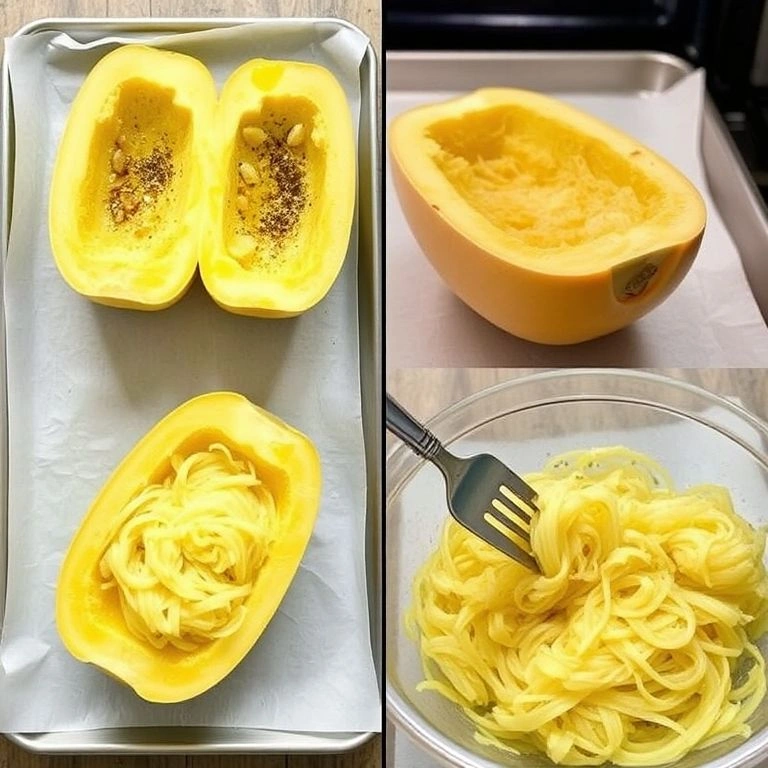
2. Roast the Vegetables
While the squash cooks, prepare your vegetables for roasting. First, arrange all your sliced vegetables (except garlic) on a large baking sheet. Then drizzle with olive oil and sprinkle with Italian seasoning, salt, and pepper. Toss gently to coat all vegetables evenly. Next, spread them in a single layer, ensuring they’re not overcrowded. If necessary, use two baking sheets to give the vegetables plenty of space.
During the last 15-20 minutes of the squash’s cooking time, place the vegetables in the oven and roast until they’re tender and slightly caramelized at the edges. In the final 2 minutes of roasting, sprinkle the minced garlic over the vegetables and return to the oven. This timing prevents the garlic from burning while still releasing its aromatic flavors into your spaghetti squash primavera.
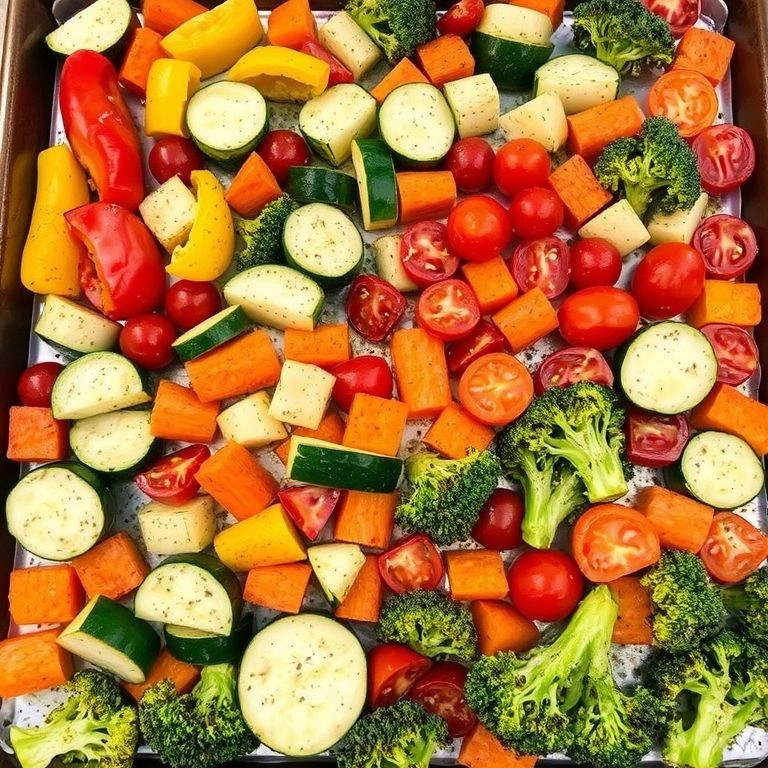
3. Prepare the Light Sauce
Meanwhile, prepare the simple sauce that will bring your spaghetti squash primavera together. In a small bowl, whisk together olive oil and lemon juice until emulsified. Then stir in chopped basil and parsley. If using Parmesan cheese, add it now and mix well. Season with salt and pepper to taste. This light, herb-infused dressing will perfectly complement the roasted vegetables and squash without overwhelming their natural flavors.
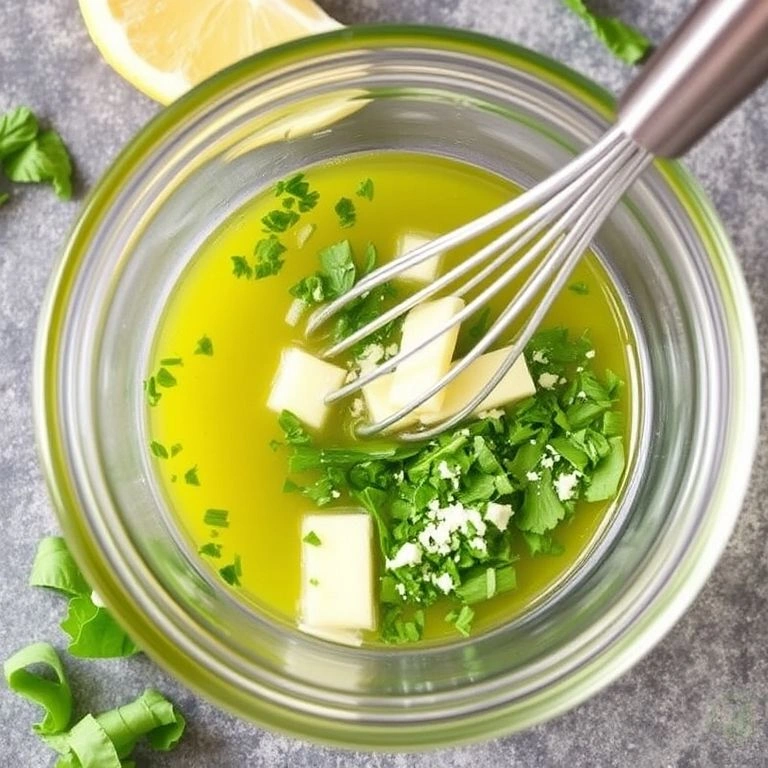
4. Combine and Serve
Now comes the fun part—bringing your spaghetti squash primavera together! First, place the spaghetti squash strands in a large serving bowl. Then add the roasted vegetables, pouring any flavorful oil from the baking sheet into the bowl as well. Next, drizzle the herb sauce over everything and toss gently to combine, ensuring the squash and vegetables are evenly coated.
Finally, taste and adjust seasonings as needed. Serve your spaghetti squash primavera warm, garnished with additional fresh herbs and Parmesan cheese if desired. Consequently, you’ll have a beautiful, colorful dish that’s as nutritious as it is delicious!
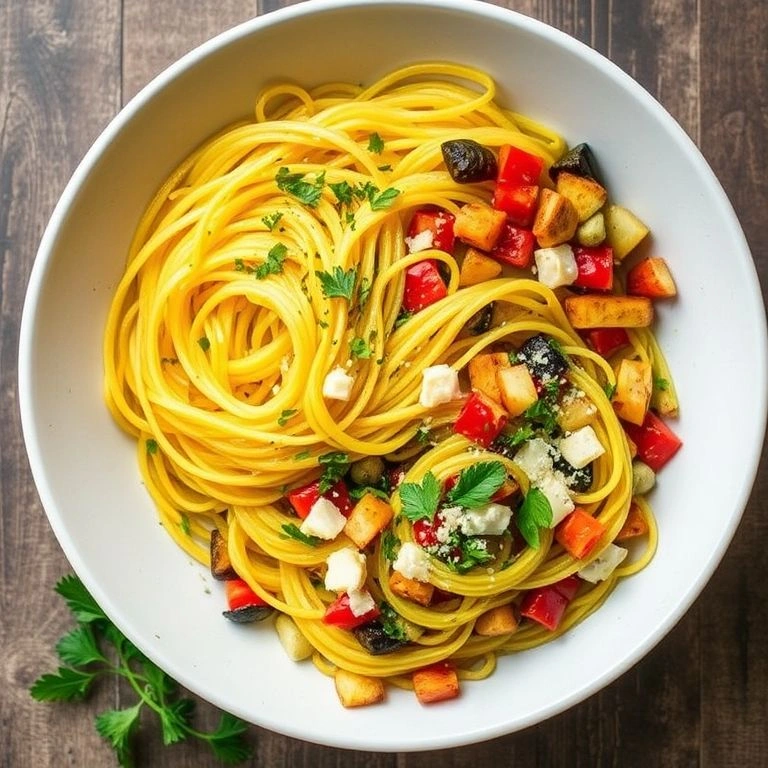
Tips for Perfect Spaghetti Squash Primavera
To elevate your spaghetti squash primavera to restaurant quality, consider these helpful tips:
- Don’t overcook the squash: Aim for al dente strands that hold their shape rather than mushy ones that will release too much water
- Pat dry if necessary: If your squash seems watery after cooking, gently pat the strands with paper towels before combining with other ingredients
- Cut vegetables uniformly: Similar-sized pieces will cook at the same rate, ensuring everything is perfectly tender
- Customize your vegetables: While the recipe suggests spring vegetables, feel free to use whatever is in season or available in your pantry
- Make ahead option: Roast the squash and vegetables separately up to 2 days ahead, then reheat and combine with fresh sauce when ready to serve
Nutritional Benefits of Spaghetti Squash Primavera
One of the best aspects of this spaghetti squash primavera is its impressive nutritional profile. Let’s look at what makes this dish so healthy:
- Low in calories: A generous serving contains roughly 200-250 calories compared to 400+ in traditional pasta primavera
- High in fiber: The combination of squash and vegetables provides 6-8 grams of fiber per serving
- Rich in antioxidants: The colorful vegetables contribute various phytonutrients that fight inflammation and oxidative stress
- Excellent vitamin source: Provides over 100% of your daily vitamin C needs plus significant amounts of vitamins A and K
- Good source of minerals: Contains potassium, magnesium, and manganese for heart and bone health
Moreover, this spaghetti squash primavera keeps you satisfied without weighing you down, making it perfect for an energizing lunch or light dinner.
Variations to Try
While this basic spaghetti squash primavera recipe is delicious as is, you can customize it in many ways:
Protein Additions:
- Add grilled chicken breast for a heartier meal
- Toss in sautéed shrimp for a seafood version
- Include white beans or chickpeas for a vegetarian protein boost
Sauce Alternatives:
- Use pesto instead of the lemon-herb sauce
- Create a light cream sauce with Greek yogurt and garlic
- Try a sun-dried tomato sauce for deeper flavor
Seasonal Adaptations:
- Summer: Use eggplant, corn, and extra tomatoes
- Fall: Incorporate butternut squash cubes and Brussels sprouts
- Winter: Add roasted root vegetables like carrots and parsnips
Serving Suggestions
This spaghetti squash primavera works wonderfully as a:
- Main dish for a light dinner
- Side dish alongside grilled protein
- Meal prep option for healthy lunches
- Potluck contribution that accommodates multiple dietary needs
To create a complete meal, consider serving your spaghetti squash primavera with a simple green salad and perhaps a slice of whole-grain bread for those who might need additional carbohydrates.
Storage and Reheating Tips
Another benefit of this spaghetti squash primavera is its excellent storage capabilities. Store leftovers in an airtight container in the refrigerator for up to 4 days. When reheating, add a splash of water or broth to prevent drying out, and warm gently in a skillet over medium-low heat or in the microwave for 1-2 minutes.
I don’t recommend freezing the completed dish, as the vegetables and squash can become watery upon thawing. However, you can freeze plain cooked spaghetti squash strands for future meal prep, then thaw and combine with fresh vegetables as needed.
Why This Recipe Works for Everyone
This spaghetti squash primavera has universal appeal for several reasons. First of all, it satisfies various dietary needs without requiring special ingredients. Furthermore, it introduces skeptics to vegetables in an approachable, colorful format. Additionally, it works for busy weeknights since components can be prepared ahead of time. Most importantly, it delivers genuine satisfaction without leaving you feeling heavy or sluggish after eating.
The balance of flavors and textures in this spaghetti squash primavera—from the slight sweetness of the squash to the savory roasted vegetables and bright herb sauce—creates a truly crave-worthy dish that happens to be incredibly good for you.
Conclusion
This spaghetti squash primavera proves that healthy eating doesn’t mean sacrificing flavor or satisfaction. By replacing traditional pasta with roasted spaghetti squash and loading up on colorful vegetables, you create a meal that nourishes your body while delighting your taste buds. Above all, this versatile dish adapts to your preferences, pantry inventory, and seasonal produce availability.
Whether you’re following a specific eating plan, looking to incorporate more vegetables into your diet, or simply wanting to try something new, this spaghetti squash primavera deserves a spot in your recipe collection. Therefore, I encourage you to give it a try—I’m confident it will become a new favorite in your healthy meal rotation!
Have you cooked with spaghetti squash before? Meanwhile, I’d love to hear your thoughts or variations on this recipe in the comments below!
Description
Looking for a lighter twist on pasta night? This Spaghetti Squash Primavera pairs roasted squash strands with fresh, colorful veggies in a vibrant, nutrient-packed dish that’s full of flavor.
Ingredients:
For the Spaghetti Squash:
For the Primavera Vegetables:
For the Light Primavera Sauce:
Instructions
Prepare the Spaghetti Squash
-
Preheat oven to 400°F (200°C).
-
Cut squash in half lengthwise and scoop out seeds.
-
Brush with olive oil, season with salt and pepper.
-
Place cut-side down on a parchment-lined baking sheet.
-
Bake 35–45 minutes, until tender and strands pull easily with a fork.
-
Let cool slightly, then scrape into spaghetti-like strands. Set aside.
Roast the Vegetables
-
Arrange sliced vegetables (except garlic) on a baking sheet.
-
Drizzle with olive oil, season with Italian seasoning, salt, and pepper. Toss to coat.
-
Spread in a single layer (use two sheets if needed).
-
Roast during the last 15–20 minutes of squash’s cooking time, until tender and caramelized.
-
In the final 2 minutes, add minced garlic to roast lightly.
Prepare the Light Sauce
-
In a small bowl, whisk together olive oil and lemon juice.
-
Stir in chopped basil and parsley.
-
Optional: add Parmesan cheese for richness.
-
Season with salt and pepper to taste.
Combine and Serve
-
Place spaghetti squash strands in a serving bowl.
-
Add roasted vegetables and any oil from the pan.
-
Drizzle herb sauce over and toss gently to coat.
-
Adjust seasonings, garnish with herbs and Parmesan if desired.
-
Serve warm and enjoy your colorful, nutritious primavera!
Nutrition Facts
Servings 4
Serving Size 1
- Amount Per Serving
- Calories 220kcal
- % Daily Value *
- Total Fat 14g22%
- Total Carbohydrate 22g8%
- Dietary Fiber 6g24%
- Sugars 9g
- Protein 5g10%
- Vitamin C 70 mg
- Calcium 80 mg
- Iron 2.5 mg
* Percent Daily Values are based on a 2,000 calorie diet. Your daily value may be higher or lower depending on your calorie needs.


